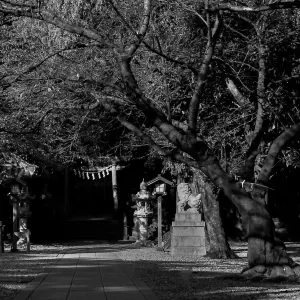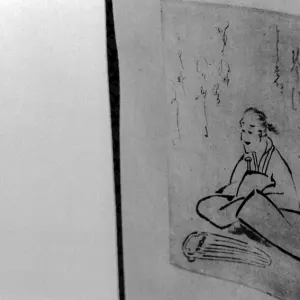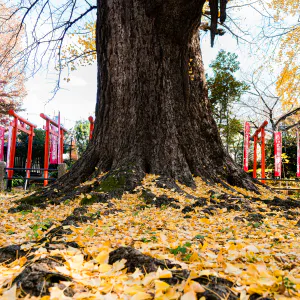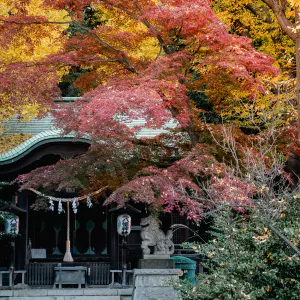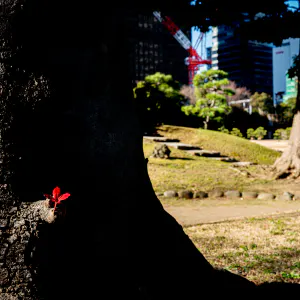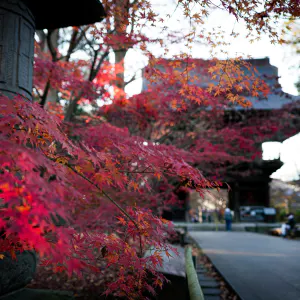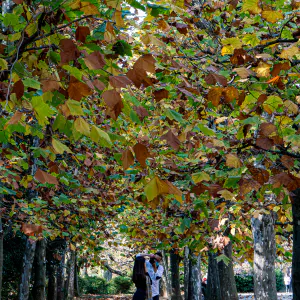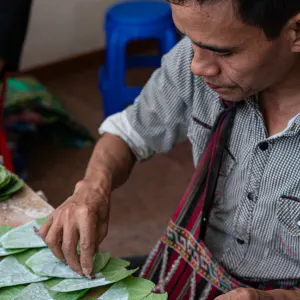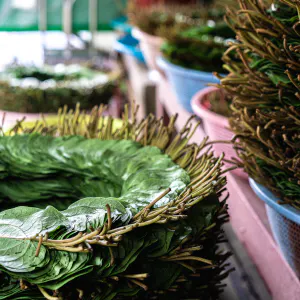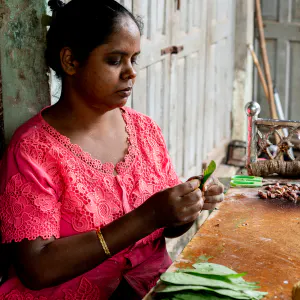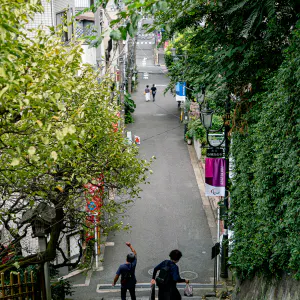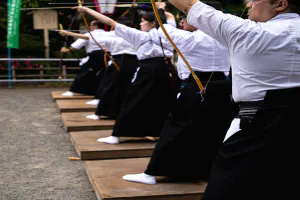Most Sakaki sold in Japan is imported from China
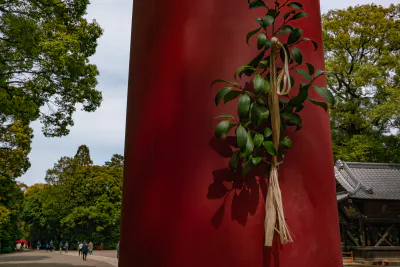
While it is a major plant offered at altars and used in Shinto rituals, in the Buddhist world it has a much less prominent presence. The fact that the Chinese character for Sakaki (榊) itself is a national character created in Japan was one of the factors that led people to believe that Sakaki was something that only existed in Japan. Since Sakaki is only found in Japan, it is not used in Buddhism, which came from India via China, but is used in Shintoism, which originated in Japan.
At the Hikawa Jinja Shrine in Saitama City, Saitama Prefecture, where I visited on the same day, Sakaki was also on display. A large vermilion torii gate was decorated with lively Sakaki. The word "Sakaki" is meaning the border between gods and humans, and like the torii gate, the Sakaki proudly indicated that the area ahead was a sacred place. I knew that Sakaki, a specialty of Japan, is also used at venerable shrines.
However, a little research soon revealed that this was nothing more than my illusion. According to the Encyclopedia of Japan, Sakaki is widely found in the world, and "about 350 species in 12 genera" are known, mainly in the tropical and subtropical regions of Asia, Africa, and America. It is found in a surprisingly wide variety of habitats. What was even more surprising was that 90% of the Sakaki sold in Japan was imported from China. Not only are Sakaki trees found only in Japan, but most of the Sakaki on the market are imported from overseas.
| May 2022 NATURE SAITAMA | |
| LEAF SAITAMA CITY SHRINE TORII |
PHOTO DATA
No
12272
Shooting Date
Mar 2022
Posted On
May 21, 2022
Modified On
August 13, 2023
Place
Saitama City, Saitama
Genre
Nature Photography
Camera
SONY ALPHA 7R II
Lens
ZEISS LOXIA 2/35

